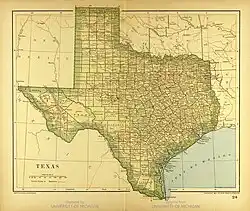
Texas’s diverse cultural landscape is the result of centuries of migration by peoples from across the globe, each wave reshaping the region’s identity and economy. From sixteenth-century Spanish expeditions to twenty-first-century global immigration, newcomers have arrived seeking opportunities, fleeing conflicts, and pursuing religious and social freedoms. The routes detailed in the table below capture pivotal moments in Texas history, highlighting critical motivators such as land availability, labor demand, and political upheaval.
Research your ancestors on MyHeritage
List of Texas historical migration routesList of Texas historical migration routes
| Time Period | Ethnic Group | Origination Location | Arrival Location | Motivating Factors |
|---|---|---|---|---|
| 16th–18th centuries | Spanish explorers, missionaries, and settlers | Spain (and later New Spain, primarily central Mexico) | Spanish colonial outposts in present-day Texas (e.g., Ysleta, San Antonio) | Expansion of the Spanish Empire, establishment of missions and presidios |
| Early 18th century | Canary Islanders | Canary Islands, Spain | San Antonio (Villa de San Fernando) | Spanish Crown decree to populate frontier regions, secure territorial claims |
| 1820s–1830s | Anglo-American settlers (often called "Old Three Hundred") | Southern United States (especially the Old South) | Stephen F. Austin’s colonies in Mexican Texas (e.g., along the Brazos and Colorado Rivers) | Land grants, economic opportunity, expansion into Mexican territory |
| Early–mid 19th century | Enslaved African Americans | Forced migration from the southern United States | Plantations in East Texas | Expansion of slave-based agriculture in the cotton-growing frontier |
| 1840s–1860s | German immigrants | German states (e.g., Prussia, Bavaria) | Texas Hill Country (e.g., New Braunfels, Fredericksburg)[1] | Economic hardship in Europe, political unrest (Revolutions of 1848), availability of inexpensive land |
| Mid–late 19th century | Czech and Polish immigrants | Bohemia, Moravia (Czech lands), and various Polish regions | Central Texas (e.g., Fayette County, Washington County) | Escape from political oppression and economic struggles in Europe, farmland opportunities |
| Late 19th century | Jewish immigrants | Germany, Eastern Europe | Urban centers (e.g., Galveston, Houston) | Seeking religious freedom, Galveston Movement (port of entry), economic opportunity |
| Post-Civil War (1865–1890s) | Freed African Americans | Southern United States | Freedmen’s settlements in East and Central Texas | Emancipation, search for land ownership, work opportunities, and community |
| Early 20th century (1910–1930) | Mexican immigrants | Central and Northern Mexico | Border regions, South Texas, major Texas cities (e.g., San Antonio, Houston) | Mexican Revolution (1910–1920), economic opportunity in agriculture, railroads |
| 1930s–1940s | Dust Bowl migrants (“Okies” and others) | Great Plains states (e.g., Oklahoma, Arkansas) | Panhandle and North Texas, larger cities | Environmental disasters (Dust Bowl), search for work (agricultural and industrial) |
| Late 20th century–present | International immigrants (Asian, African, Latin American, and others) | Various global regions (e.g., India, Vietnam, Nigeria) | Major urban centers (e.g., Houston, Dallas-Fort Worth, Austin) | Economic opportunities, political asylum, education, and technology sector growth |

